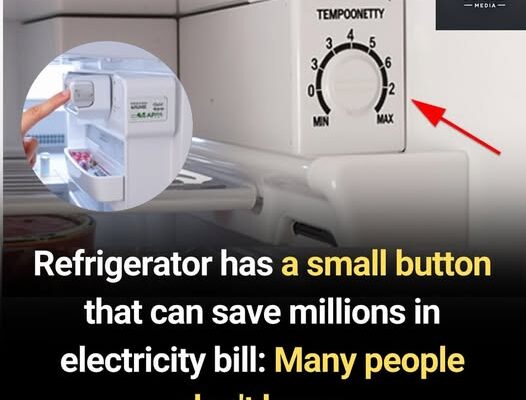Your Refrigerator Has a Small Button That Can Save You Big on Your Electricity Bill — And Most People Don’t Know About It
Millions of households are missing out on a simple trick that could lead to big savings on their energy bills — and it’s hiding in plain sight, right inside your refrigerator.
Experts say many refrigerators, especially modern ones, come with a little-known feature: a small button or switch often labeled “Energy Saver” or “Power Saver.” While it might seem insignificant, activating this button can reduce your appliance’s energy consumption by up to 10%, which, over time, could save families hundreds of dollars annually.
 What Does the Energy Saver Button Do?
What Does the Energy Saver Button Do?
In most fridges, the energy saver function controls a heating coil located around the door frame. This coil is used to prevent condensation and moisture buildup around the seal — a feature that’s helpful in humid environments but unnecessary for most homes, especially those with central air or low indoor humidity.
By turning off that coil, the fridge uses less electricity, especially in cooler or drier seasons.
“It’s one of the simplest energy-saving features people overlook,” says appliance technician Josh Renner. “Most users don’t even know the button is there — or what it does.”
 Where Can You Find It?
Where Can You Find It?
The button is usually found inside the refrigerator near the temperature controls or sometimes on the front display panel in newer models. It might be labeled “Energy Saver,” “Humidity Control,” or have an icon showing water droplets or a leaf.
If you see the option — turn it on.
 How Much Can You Actually Save?
How Much Can You Actually Save?
According to the U.S. Department of Energy, refrigerators are among the top energy-consuming appliances in a home. Even a modest efficiency improvement can reduce your bill by $50–$150 per year, depending on the model and usage.
 Bonus Tips to Save Even More:
Bonus Tips to Save Even More:
- Keep your fridge full: Cold food helps maintain low temperatures more efficiently.
- Clean the coils: Dirty condenser coils force the fridge to work harder.
- Check the door seal: A loose or cracked seal can let cold air escape.
- Set the right temp: 37°F (3°C) for the fridge and 0°F (-18°C) for the freezer is ideal.
Next time you’re cleaning out your fridge, take a moment to look for that tiny button — it could make a surprising difference. In a world where electricity prices are rising and energy efficiency matters more than ever, a single press could put money back in your pocket.



